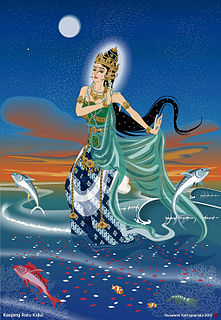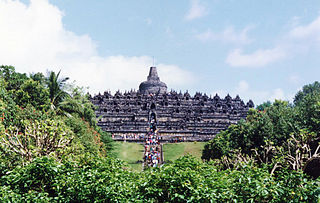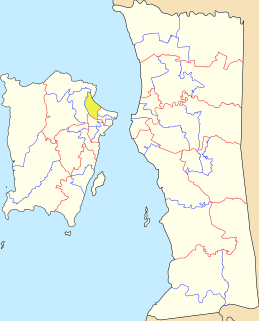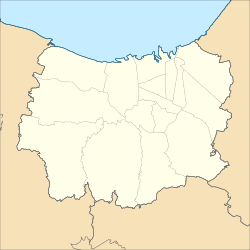
The Sultanate of Mataram was the last major independent Javanese kingdom on the island of Java before it was colonised by the Dutch. It was the dominant political force radiating from the interior of Central Java from the late 16th century until the beginning of the 18th century.

The Youth Pledge was a declaration made on 28 October 1928 by young Indonesian nationalists in the Second Youth Congress. They proclaimed three ideas: one motherland, one nation and one language.

Amangkurat II was the Susuhunan of Mataram from 1677 to 1703. Prior to taking the throne, he was the crown prince and had the title Pangeran Adipati Anom.

Nyai Roro Kidul is an Indonesian Goddess of the sea. She is the Queen of the Southern Sea in Sundanese and Javanese mythology.

The Wali Songo are revered saints of Islam in Indonesia, especially on the island of Java, because of their historic role in the Spread of Islam in Indonesia. The word wali is Arabic for "trusted one" or "friend of God", while the word sanga is Javanese for group of monks or the number nine. Thus, the term is often translated as "Sangha of saints".
Malik Ibrahim, also known as Sunan Gresik or Kakek Bantal, was the first of the Wali Songo, the nine men generally thought to have introduced Islam to Java.

The Salakanagara Kingdom is the first historically recorded Indianised kingdom in Western Java. The kingdom existed between 130-362 AD.
Claudius Ptolemaeus wrote about Java in his book, Geographie Hypogenesis. He mentions the name of Argyre Chora in Labadio. According to the historian, Labadio means Dwipa-Javaka, Dwipa-Javaka or Java Dwipa, which is the ancient name of Java Island. There was one kingdom which rule west coast Java in 160 AD, Salakanagara. Salakanagara means “Silver Nation”. It reinforces the theory that Ptolemaeus may have visited Java in 160 AD.
A relatively modern literature in the 17th century Pustaka Rajya Rajya i Bhumi Nusantara describes Salakanagara as being founded by an Indian merchant from Pallava Kingdom.
Sunan Murya is, according to the Babad Tanah Jawi manuscripts, one of the Wali Sanga involved in propagating Islam in Indonesia.
Sri Baduga Maharaja or Sang Ratu Jayadewata was the great king of the Hindu Sunda kingdom in West Java, reigned 1482 to 1521 from his capital in Pakuan Pajajaran. He brought his kingdom greatness and prosperity.

The Sonobudoyo Museum is a Javanese history and culture museum and library in Yogyakarta, Indonesia. The museum contains the most complete collection of Javanese artifacts, after the National Museum in Jakarta. In addition to ceramics of the Neolithic era and bronze sculptures from the 8th century, the museum also includes collections of wayang, various ancient weapons, and Javanese masks.
Kwitang is an administrative village (kelurahan) in the subdistrict (kecamatan) of Senen, Central Jakarta. It is one of the historic administrative village of Jakarta. The boundary of Kwitang is the Ciliwung to the west, Jalan Kramat Kwitang to the north, Jalan Kramat Raya to the east, and Jalan Kramat 4 to the south.

Raden Patah, also known as Jin Bun (1455 in Jepara – 1518 in Demak) is the first sultan of Demak Sultanate. He became sultan in 1475, but the sultanate remained a vassal of Majapahit Empire until 1478. Raden Patah took the title Panembahan Jimbun after legitimizing the Sultanate of Demak as the successor of Majapahit Empire and his appointment as the sultan of Demak by Wali Sanga.
Pakubuwono I, uncle of Amangkurat III of Mataram was a combatant for the succession of the Mataram dynasty, in the First Javanese War of Succession.
Amangkurat III was a short-lived ruler of Susuhunan of Mataram, reigned 1703–1705.
Prabhu Natha Girindrawardhana Dyah Ranawijaya was the ruler of the Majapahit Empire between 1474 and 1498. He is referred in a Jiyu inscription as Sri Wilwatikta Jenggala Kediri, which means ruler of Majapahit, Janggala and Kediri, and as Pa Bu Ta La in Chinese literature.

Tanjong Bunga is a state constituency in Penang, Malaysia, that has been represented in the Penang State Legislative Assembly since 1959. It covers the suburbs of George Town along the northern coast of Penang Island, including Batu Ferringhi, Tanjung Bungah and parts of Tanjung Tokong.

Kebun Bunga is a state constituency in Penang, Malaysia, that has been represented in the Penang State Legislative Assembly since 1986. It covers the Penang Botanic Gardens, after which it is named, as well as parts of George Town's western suburbs - Tanjung Tokong and Air Itam.

Pulau Tikus is a state constituency in Penang, Malaysia, that has been represented in the Penang State Legislative Assembly since 2004. It covers two of George Town's affluent suburbs - Pulau Tikus and parts of Tanjung Tokong - as well as Gurney Drive.
Jawi is a state constituency in Penang, Malaysia, that has been represented in the Penang State Legislative Assembly.

Giri Kedaton was an Islamic kedatuan located in Gresik, East Java and existed in the 15th to 17th centuries, until Giri was conquered by the Mataram Sultanate in 1636.











